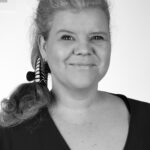Near-infrared spectroscopy has become a common quality assessment tool for fishmeal products during the last two decades. However, to date it has not been used for active online quality monitoring during fishmeal processing. Our aim was to investigate whether NIR spectroscopy, in combination with multivariate chemometrics, could actively predict the changes in the main chemical quality parameters of pelagic fishmeal and oil during processing, with an emphasis on lipid quality changes. Results indicated that partial least square regression (PLSR) models from the NIR data effectively predicted proximate composition changes during processing (with coefficients of determination of an independent test set at 𝑅2𝐶𝑉RCV2 = 0.9938, RMSECV = 2.41 for water; 𝑅2𝐶𝑉RCV2 = 0.9773, RMSECV = 3.94 for lipids; 𝑅2𝐶𝑉RCV2 = 0.9356, RMSECV = 5.58 for FFDM) and were successful in distinguishing between fatty acids according to their level of saturation (SFA (𝑅2𝐶𝑉=0.9928, 𝑅𝑀𝑆𝐸𝐶𝑉=0.24) RCV2=0.9928, RMSECV=0.24), MUFA (𝑅2𝐶𝑉=0.8291, 𝑅𝑀𝑆𝐸𝐶𝑉=1.49)RCV2=0.8291, RMSECV=1.49), PUFA (𝑅2𝐶𝑉=0.8588, 𝑅𝑀𝑆𝐸𝐶𝑉=2.11)RCV2=0.8291, RMSECV=1.49). This technique also allowed the prediction of phospholipids (PL 𝑅2𝐶𝑉=0.8617, 𝑅𝑀𝑆𝐸𝐶𝑉=0.11RCV2=0.8617, RMSECV=0.11, and DHA(𝑅2𝐶𝑉=0.8785, 𝑅𝑀𝑆𝐸𝐶𝑉=0.89) RCV2=0.8785, RMSECV=0.89) and EPA content 𝑅2𝐶𝑉=0.8689, 𝑅𝑀𝑆𝐸𝐶𝑉=0.62)RCV2=0.8689, RMSECV=0.62) throughout processing. NIR spectroscopy in combination with chemometrics is, thus, a powerful quality assessment tool that can be applied for active online quality monitoring and processing control during fishmeal and oil processing.
Tag: Quality assessment
Near-infrared spectroscopy has become a common quality assessment tool for fishmeal products during the last two decades. However, to date it has not been used for active online quality monitoring during fishmeal processing. Our aim was to investigate whether NIR spectroscopy, in combination with multivariate chemometrics, could actively predict the changes in the main chemical quality parameters of pelagic fishmeal and oil during processing, with an emphasis on lipid quality changes. Results indicated that partial least square regression (PLSR) models from the NIR data effectively predicted proximate composition changes during processing (with coefficients of determination of an independent test set at 𝑅2𝐶𝑉RCV2 = 0.9938, RMSECV = 2.41 for water; 𝑅2𝐶𝑉RCV2 = 0.9773, RMSECV = 3.94 for lipids; and 𝑅2𝐶𝑉RCV2 = 0.9356, RMSECV = 5.58 for FFDM) and were successful in distinguishing between fatty acids according to their level of saturation (SFA (𝑅2𝐶𝑉=0.9928, 𝑅𝑀𝐸𝐶𝑉=0.24)RCV2=0.9928, RMSECV=0.24 𝑅2𝐶𝑉=0.8291, 𝑅𝑀𝑆𝐸𝐶𝑉=1.49)RCV2=0.8291, RMSECV=1.49), PUFA (𝑅2𝐶𝑉=0.8588, 𝑅𝑀𝑆𝐸𝐶𝑉=1.49)RCV2=0.8291, RMSECV=1.49). This technique also allowed the prediction of phospholipids (PL 𝑅2𝐶𝑉=0.8617, 𝑅𝑀𝑆𝐸𝐶𝑉=0.11RCV2=0.8617, RMSECV=0.11, and DHA (𝑅2𝐶𝑉=0.8785, 𝑅𝑆𝐶𝑉=0.89) and EPA content. 𝑅2𝐶𝑉=0.8689 , 𝑅𝑀𝑆𝐸𝐶𝑉=0.62)RCV2=0.8689, RMSECV=0.62) throughout processing. NIR spectroscopy in combination with chemometrics is, thus, a powerful quality assessment tool that can be applied for active online quality monitoring and processing control during fishmeal and oil processing.
New technology to increase the value of catfish catches
The purpose of the project was to adapt processing to supercooled raw materials, to ensure the homogeneity of raw materials with the aim of improving product quality, increasing utilization and minimizing fillet defects. In the project, a new type of skinning machine was developed and then tested under real conditions. Comparison of supercooled and traditional (frozen) ingredients. Supercooled raw material is stiffer than conventional, and the same can be said for fillets cooled after filleting to ensure packing in fresh packages at low temperatures, preferably below 0 ° C. Traditional skinning machines have not been able to handle such raw material, but the new machine has already been put into use and is proving successful. A comparative experiment was carried out between super-chilled haddock that was six days old and traditional raw material from the same catch. Subsequently, a comparative study was conducted on cod, made from super-chilled and conventional raw materials. Utilization, fillet quality and defects were compared, as well as product division after cutting into fillet pieces, as well as temperature processes during processing in both groups. The results were very good for supercooled raw materials, both in terms of quality, utilization and temperature of products.
The purpose of the project was to customize processing of sub-chilled raw materials to ensure uniformity of raw materials with the aim of improving product quality, increasing utilization and minimizing fillet defects. A new skinning machine for demersal fish was designed and tested in this project, especially to work with sub-chilled raw material. Sub-chilled raw material is more rigid than traditional raw material and can withstand more handling and give better quality of the finished product. Sub-chilled raw material also provides lower product temperature in packed fresh fish production, at 0 ° C or even below it. Traditional skinning machines have not been able to handle sub-chilled fillets. A comparative experiment with six-day old haddock where sub-chilled raw material were compared with traditional one, from same catch, were processed. Built on that outcome a follow-up, a comparative study of cod was processed with sub-chilled and traditional raw material. In both experiments a comparison of yield, fillets quality, fillets defects and temperature throughout the production into final packaging were recorded. The results were excellent in favor of sub-chilled raw material, both in terms of quality, yield and temperature of products.
View report
Modeling of Temperature Changes, Energy Usage and Quality Changes During Automatic Box Freezing of Mackerel
In August 2012 in Tvøroyri in the Faroe Islands, a study was carried out on the production line at Varðin Pelagic, which comes from Skagan hf. in Akranes. The aim was to compare Skagan's box plate freezing method with conventional blow freezing in terms of energy consumption, temperature and product quality. The efficiency of box plate freezers was assessed by time and temperature measurements, simulations of fish temperature through the processing line and quality assessment at different points in the processing.
In August 2012 a trip was made to Tvøroyri, Faraoe Islands to measure and analyze Vardin Pelagic's new production line by Skaginn among others. The goal was to compare the automatic box freezing method to the commonly used blast freezing method in terms of energy usage, temperature and product quality. The efficiency of the automatic box freezer was evaluated by mapping the processing time and ambient temperature effects, simulating the product temperature in the production line and performing quality assessment throughout the production line.
Report closed until April 1, 2017



